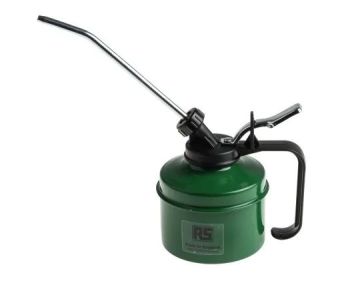Motor racing is the perfect sport with a huge following around the world. While the drivers race their cars, their fans and betting fans at Netent casinos not on GamStop can also win big money. In addition, it is very important to bet only at reputable and reliable online resources such as starburst not on gamstop, which offers unique features, freespins as well as reliable security features.
Motorsport betting strategy #1 - Betting on the fastest lap
This is not the most ordinary idea for a motorsport betting strategy: What if the person who wins the race is not necessarily the fastest? Inexperienced motor racing bettors and casual observers often assume that the fastest one always wins.
Why is the winner not necessarily the fastest? The usual strategy of the race leader is to slow down to save their tyres, position and fuel. They can win comfortably if they can ensure that the driver who is ahead of them doesn't overtake them in the battle for first place.
The racer further down the track will do everything they can to catch up to their leader. They often have faster lap times (speeds than the race leader) or even take second and third places. This is a great chance to explore outsiders who may not be favourites to win this race.
Double odds betting markets can allow you to put money on the favourite to win (usually the reigning champion). You can also choose the driver who you think will post the fastest lap in the race. This strategy is great for live betting and qualifying rounds leading up to the main race.
Motorsport betting strategy #2. What about the top 10?
High turnover in motorsport is often a hallmark. This applies to engines and cars as well as drivers. It often leads to disappointing or unpredictable results, and sometimes the favourite (or favourites) are eliminated too early.
Leading motorsports, such as Formula 1, focus on more than just who will win the race. While the winner gets all the awards, points and champagne, motorsport racing is more complicated. The first place winner gets the most points. However, points are also available for third, fourth and tenth places.
Keep an eye on the top ten finishers and the best drivers who are physically capable of filling these places, and this can increase your betting opportunities on motorsport. You can find markets that allow you to bet on which driver or drivers finish in the top ten or top six . This can help relieve some of the pressure of focusing solely on the winner.
Use statistics when betting on motorsport
Motorsport statistics provide useful information that can be used when betting on different races. Statistical analysis helps to determine the relationship between different variables. The player should select the winning variable and any statistics recorded and available to place a bet on the event. In motorsport betting, drivers and teams are judged on their stats and achievements over the season.
Players should use the statistics and other factors mentioned here to justify the success of the team or driver they wish to bet on to win big. The most important statistics to use in motor sports betting include:
· The leading driver with the most laps. Your winning strategy will be to pick who wins the fastest lap. Base your predictions on who has led the most laps in races.
· Most podiums. See how many top three finishes a driver has.
· Most laps led . Consider the driver with the most laps completed in a season.
· Highest number of pole positions - Mark the driver who was fastest in qualifying and started first. Consider the driver who led the fastest lap during the race.
The first step in assessing the condition of the track and the performance of the team for extended stakes is to examine the track itself. Evaluate the length of the track, surface texture and other variables that may affect the race. For example, some teams or drivers may win if the track has tight turns or steep climbs.
Emphasis on team strength
Team differences are crucial when you are betting on certain types of motorsport. Formula 1 is the best example, because the gap between the budgets of different teams is evident on the track.
The leading F1 teams are usually a head above the rest. It is virtually impossible to beat the top teams in a car designed by one of the lesser known teams. The bigger the difference in the race you are going to bet on, the more important it is to carefully analyse what each team has to offer.
Keep an eye on the weather 
You cannot ignore the weather when betting on a car race. Conditions can vary widely and each rider's results depend on them for several reasons. First you need to set up your car or bike. Some vehicles are good in good weather, but they can be unlucky in extreme conditions.
Here are some of the factors that are affected by the weather:
1. Tyre wear. Getting the most out of tyres before they are replaced is a key component of many motorsport activities, and weather certainly affects tyre wear.
2. Fuel consumption . Some races currently have no refuelling, but in others this element is still present. Weather conditions can make a crucial difference in terms of consumption.
3. Grip - The grip of cars and motorbikes on the track is important for their performance. Naturally, extreme conditions such as heavy rain or extreme heat can cause all sorts of problems.
There are other aspects you have to consider, including the fact that some drivers have a preference for weather conditions. Some have a reputation for coping with bad weather, while others struggle with great difficulties.
It is also important to realise that some of the biggest surprises happen in extreme conditions. If you are aiming for high motorsport betting odds, bad weather can be your friend.
F1 Live betting tips
Live betting on Formula One races is another great option that can open the door to a variety of lucrative bets.
Watching the Grand Prix unfold and keeping an eye on the details is something that many racing fans do anyway. The question is whether you have the experience to recognise trends and exploit them. Here are the main areas you should follow if you want to bet on F1 live with real money:
· Race strategy. You should keep an eye on all pit stops and try to figure out each driver's race strategy;
· Signs of problems - Always check the drivers pace so you can spot any signs of potential performance degradation;
· Weather forecast - If rain is on the horizon, anything can happen;
· Pit-stop communication - Listen to the communication between drivers and engineers to get valuable information. If you can follow all of the above and make intelligent F1 betting predictions based on the information, you can definitely win money.
Those of you wondering where to bet on live Formula One races will be happy to know that the best Formula One gaming sites offer odds during each Grand Prix.
Betting on Formula 1 futures
And now for tips on how to bet on Formula One racing futures. Here are the most popular bets of this type:
· Formula One Championship Winner. You can back any driver to win the Formula
· One championship at the end of the season;
· Finishing in the top three is a safer option;
· F1 Constructors' Championship winners. Betting on the last event of the season.
· The driver who will win the race. You can support the driver who wins at least one race during the season.
Look for the best car
The starting point of almost all bets on the future of Formula One has to do with the teams. The gap between different cars is usually much bigger than the gap between different drivers. Sure, a guy like Lewis Hamilton is clearly better than Valtteri Bottas. But in the past he has suffered defeat at the hands of some of his other teammates in a single season.
The best drivers on the starting grid are very close in skill level, so the car they drive is likely to be the deciding factor over a long period of time. Don't ignore this when it comes to betting on F1.
Team atmosphere is crucial
Even the best driver in the best car may not win a Formula 1 championship if he is constantly at war with his engineers and technical directors.
There are a lot of big egos involved at the highest level. Sometimes the lack of cohesion can be a huge problem. Every team must work as one; from every engineer, to the driver, to the overall technical management. If unity is lost, results can suffer and this should always be considered when betting on F1 futures.
Bets on the end of the F1 season
The funny thing about Formula One is that it combines features of both team and individual sports. Drivers compete for their personal glory, but must also follow the objectives of the constructor they represent.
The latter becomes painfully obvious towards the end of the F1 season, when the team makes the decisions and the drivers have to follow them. This should be kept in mind when placing bets on F1, as the following scenarios happen almost every year.
Pushing one of the riders
If one rider is fighting for the title, his teammate will often give up positions in line with team orders. Or he may have to follow a race strategy designed to slow down his rivals. No risk - when a team is competing for the constructors' cup, which you can read more about on Wikipedia, drivers may be warned not to take risks near the end of the race, rather than trying to overtake their rivals.
Developing a car for next season
All F1 teams have limited resources and if they can't get anything in the current season, they allocate it to a car for the next campaign. Results naturally suffer from this approach. Always adjust your F1 betting strategy for each race according to the team's goals later in the campaign.
Why does the track affect the F1 betting strategy?
There are many reasons to consider the track when betting on F1 races, because several factors strongly influence the results. Weather conditions. Although the weather conditions at the same track can vary greatly over two consecutive F1 seasons, in most cases they are the same. Humidity, air temperature, track temperature all affect cars in terms of tyre wear, fuel efficiency and overall performance.
Overtaking places - some tracks have multiple places to overtake, others are limited in this aspect and there is little drivers can do if they fall behind.
Starting grid. At some Grand Prix you may see a chaotic start and a large number of drivers at the start because of the position on the starting grid. These tracks tend to be more inconsistent in terms of results.
Driver preference. Every driver loves some tracks and hates others. The confidence of a guy who has won the same race several times before can make a difference.
Motorsport betting offers excellent ways to make money by betting online. Motorsport is no different to other sports betting. You have to use statistics and expert analysis to get your bets right. To succeed in motorsport betting, you must carefully research and gather reliable information.
The process will involve checking the trends of the driver, the team and the race track. Most importantly, statistics will help improve betting skills, collect reliable data, understand probability and identify variables. Feel free to also learn from other players who have been successful in motorsport betting.
articel supplied






